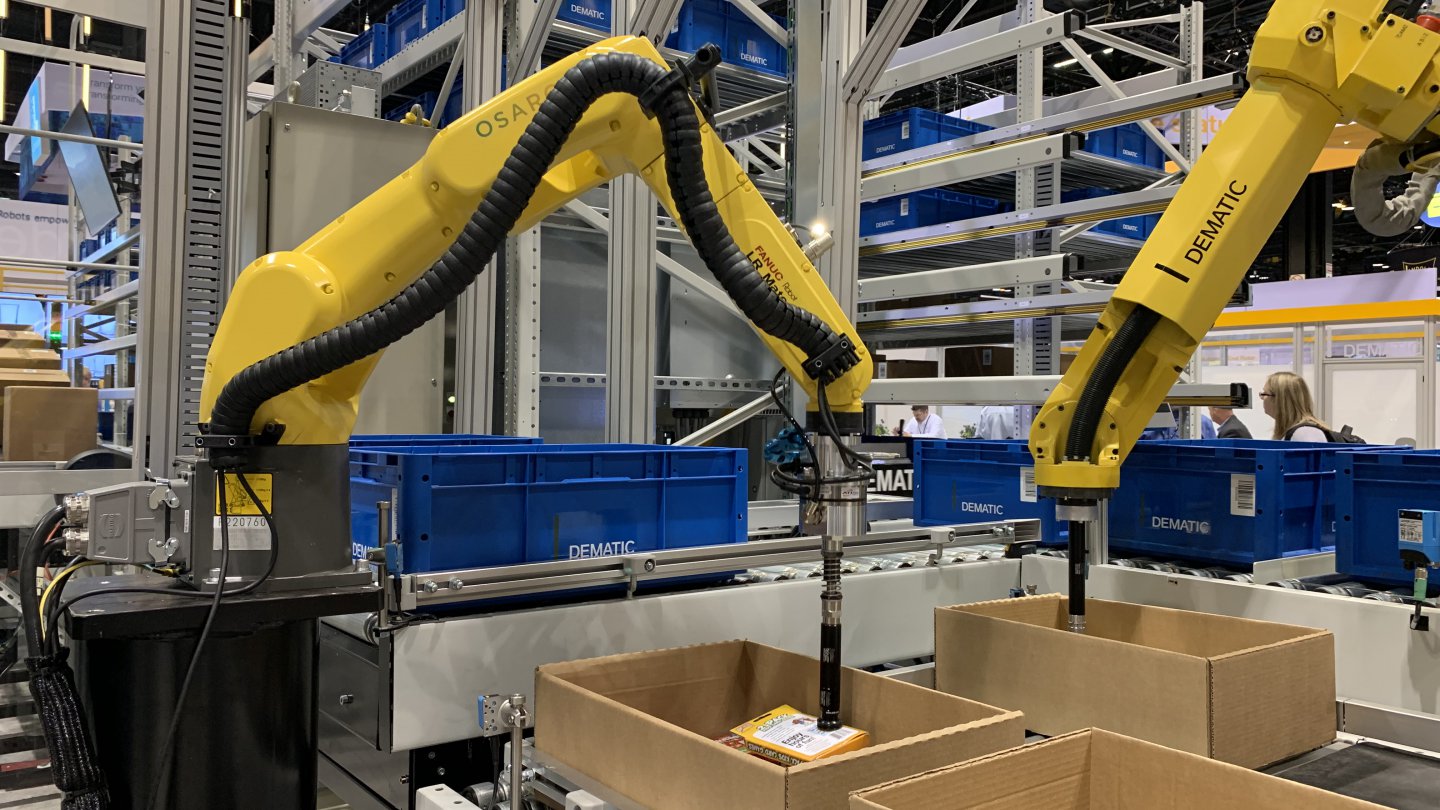Does fulfilment & distribution need to be automated? Sure, but how?
Industrial operations are being digitally transformed on a global scale, and that transformation is leaving a digital imprint across all levels of their organisations, from storage rooms to manufacturing floors.
All links of the supply chain will be affected sooner rather than later, and many companies are actively embracing technology-driven solutions, as the alternative is likely to mean being left behind by forward-thinking competitors.
This digital revolution in industry, production manufacturing, warehousing, and related segments (Industry 4.0) has combined with better interconnectivity between upscaling Operational Technology (OT) and Information Technology (IT): these are the drivers for next-gen Industrial Internet of Things (IIoT).
Industry 4.0 and IIoT adaptations have affected customer expectations — not just the expectations of consumers but often the business partners and valued clients who are purchasing and implementing such innovations in their operations centres.
Partners and industrial clients are expecting faster and more accurate order fulfilment, and they are less patient with distribution centres’ internal concerns, like staff absenteeism or workforce “churn”. Unavoidable issues of this sort can mean, unfortunately, that orders pile up, and operational costs spiral.
Such intensive operational issues require inventive solutions. And for over 200 years, inventive has been at the core of all Dematic solutions as the leading designer and distributor of performance-prioritising supply chain innovations.
Dematic has led the way in optimising the supply chain with a range of integrated automated hardware, software, and services aimed at solving problems in delivering and managing goods across a wide swath of industries.
Dematic has pioneered solutions for factories, warehouses, and distribution centres, specifically in automating critical warehouse and back-of-store systems. Dematic Robotics is one of many specialised Centers of Excellence (COEs) tasked with innovating and solving industry-specific challenges.

Dematic
The Robotics COE implements automated solutions in manufacturing plants and fulfilment centres, but its solutions go beyond just automating components. The company’s history has made it aware that merely automating some elements with robotics will more than likely give rise to a host of new operational issues and potential setbacks.
How does Dematic know this? Because its teams know that before installing automated modifications, the majority (if not all) operational processes were run manually. Automating component systems without being aware of the holistic problems/challenges often cause stalls, unplanned overhead costs, and general headaches arising from the migration itself — and its eventual effects.
That’s why the Dematic Robotics COE works to directly address clients warehousing requirements, with a set of solutions that not only solves issues with automation — but also solves ongoing maintenance costs, solidifies recovery/ restore procedures, and optimises the overall running and management of warehouse operational processes.
Optimising solutions also means the equipment should be able to work seamlessly across platforms and functions. The Dematic Robotics COE works closely with Dematic’s other Centers of Excellence such as Mobile Automation and Software COEs to provide the types of software and service support needed to optimise the operations of existing equipment and with future robotics in mind.
Dematic offers clients a total solution, not just looking at the application of robotics from a singular perspective, but with a holistic, end-to-end operation process perspective to enhance the whole operation.
Its robotic systems strive to fulfil business needs as seamlessly as possible by making flexible, scalable, and modular solutions a core focus of operational integration. The modular architecture protects investments by allowing improvements to specific areas, such as robotic gripping tech, when updates become available instead of requiring a whole system retooling.
Additionally, Dematic robots can be integrated with the latest industrial developments, including Artificial Intelligence (AI), deep Machine Learning (ML), and visualisation data from sensors and cameras throughout the facility floor.
Harnessing these vision advancements, Dematic Robotic Picking Systems can, as a single example, identify a wide selection of items and their corresponding orientations, and can pick them in an assortment of shapes and sizes. Such solutions typically start producing return on investment in between six months and three years, thereafter costing just a couple of Krone an hour to run and maintain.
With growing demand, Dematic Robotic Systems augment the existing workforce, offering support where necessary, working around the clock with minimal supervision. That leaves human staff to engage in more rewarding tasks that require invention, cognitive reasoning and intelligence: in short, better jobs meaning happier workers and a good deal less staff turnover.
The Dematic Robotics COE continues to supply integrated automated solutions — from basic robotic picking stations to completely automated receiving-to-shipping systems — and the company’s holistic approach to automation in operations has significantly positive effects on nearly every aspect of managing the business.
To take those first steps toward digital transformation or get an industry expert on-board with the expertise you need, speak to a representative today.









